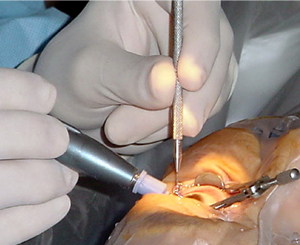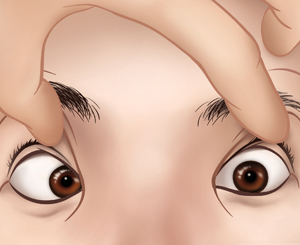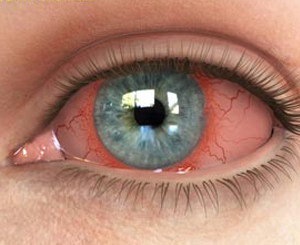Squint is an eye condition in which two eyes do not point same direction die to some misalignment. It is basically of two types, namely, divergent Squint and convergent Squint. However, some cases of vertical Squint are also reported. This condition occurs due to amblyopia. It is one of most commonly found genetic diseases in children. However, this problem should not be ignored and as soon as its symptoms are noticed, appropriate assistance and treatment should be taken by consulting expert doctors. Another word of Squint is Strabismus which is mainly popular in Europe and USA. This problem is mostly reported in young people or children. It is caused due to weak muscles, injuries, heredity, poor vision or retinal disease and internal eye pathology. The two common categories of squint which are usually reported are esotropia (an eye revolves in) and exotropia (an eye revolves out).
What are the various categories of squint?
Squint is categorized into various types on the basis of direction of squinting eye:
· Eye that turns inwards is esotropia
· Eye that turns outwards is exotropia
· Eye that turns upwards is hypertropia
· Eye which turns downwards is hypotropia
It is also categorized into two types on the basis of severity of squint which include:
· Concomitant squint which refers to squint in which angle of severity is always same in every direction.
· Incomitant squint which refers to squint in which angle of severity can vary in every direction you look.
On the basis of causes it is further categorized into:
· In some childhood squint cases the reason is not known
· Other cases of childhood squint occurs due to some disorder of eye, eye muscles and neurons
What are the Symptoms and signs of squint?
Most obvious and common symptom of Squint is that two eyes always point in opposite directions. Some squint patients try to orient their heads and faces in a specific direction in which their eyes can be brought in required normal orientation. Some time the patents feel confusion and double vision. This eye condition some time causes poor vision, blurred vision as well as total blindness.
The primary sign of squint is that the eye is not straight. Then there could be faulty depth perception which could be present. It could also cause confusion or double vision in children.
What are the causes of squint in children and adults?
There are so many reasons due to which it develops in children and adults. Some of the reasons are:
· Poor vision: Due to poor vision, human brain becomes unable to orient eyes in same direction.
· Genetic: Numerous cases of squint have been reported in which a family history of same problem was found.
· Normal eye problem: Normal eye problem such as long sight and short sight problem also causes Squint and also affect vision.
· Weak muscles: Weak muscles also cause Squint problem because muscles depends on nerves system so if human nerves system is weak, then it has an adverse affect on the vision. Almost six muscles of nerves system are attached with eyes that are totally responsible for movement and control of eye. That is why nerves system mainly affects eyes.
· Injuries: Squint can happen in children and adults due to sudden injuries also.
Why its early diagnosis is important?
To know the reason behind this problem as well as for providing proper treatment, the diagnosis of Squint is very important. Right diagnosis helps to find out the main underlying cause behind the problem. Its timely diagnosis in any case is very important because it can have an adverse effect on vision and can develop permanent vision problems.
What are various methods of diagnosing it?
In case of children pediatrician should examine the child or an ophthalmologist should do some examinations during infancy and preschool. This helps in diagnosis and early treatment of eye problem like squint. In some cases family history should be properly checked to avoid this kind of eye diseases. It cannot be determined without the help of a doctor because it is really difficult to check the difference of both the eyes at young age.
What are various complications of this disease?
Amblyopia is an eye situation which is also referred as lazy eye could affect children. In this case children often face weak eye-sight and poor vision. This is a major cause of lack of use of eyes in early childhood stage. It cannot be corrected using glasses. But can be treated by proper medication or surgery. Squint could be a major reason which can lead to this abnormal eye condition which can ultimately lead to permanent loss of vision.
Is squint risky for eyes or for health?
Squint does not create any hazard for life and health. However, it can impinge on your daily schedule, especially in case of kids, as routine tasks get affected due to this problem. Amblyopis can also occur to your children if they are suffering with strabismus. Lazy eye is the circumstance where the eyes’ angle gets reduced. As an outcome, the patient’s eye properly oriented to provide better vision at a definite angle. Another difficulty that can come out from strabismus is the destruction of one’s binocular vision. Usually, eyes have capacity to concentrate and focus on one object. When the eye is used to observe a definite aspect, the mind can effortlessly comprehend signs. However, when people have strabismus, the eyes are oriented at different positions. As an outcome, binocular vision can be disturbed and also it may cause difficult to perceive any three dimensional object.
Is Squint’s treatment possible if yes then how?
Yes, Squint’s treatment is possible but its treatment pattern is different for child and adult. If parents are noticing any of its symptoms in their children, then they should promptly opt for proper treatment from expert doctors to avoid its negative effects. The main goal of treatment is to straighten vision and to restore binocular vision. The treatment direct effects on unbalanced muscles and on those conditions by which Squint is caused. There are two types of treatment which are provided in Squint’s treatment surgical and non surgical.
What are the various steps involved in its treatment?
Treatment of squint mainly involves following three steps:
· Firstly, amblyopia should be treated for restricting use of good eye. This ultimately forces the abnormal eye to continue its usage in a proper way. This if done in early childhood only then can be improved easily. This can be done by eye-patching or even using glasses or eye drops which prevents normal eye to function at that time.
· Then, correcting the refractive errors by use of glasses. It not only corrects the vision of eye but it also straightens the squint eye.
· Finally, using surgical methods for improvement of appearance of eyes and in some cases it also restores binocular vision.
What is non-surgical treatment?
Non-surgical is a type of treatment in which doctors provide specific medicines and treatments other than surgery for keeping your eyes healthy. Some of the non-surgical treatments are as follows:
· Eye exercise: In some cases of Squint, it is possible to treat through exercise that helps to eyes work together.
· Glasses: It is most common treating equipment of Squint that helps to solve some common vision problem like myopia, astigmatism and hyperopia. In case of children, glasses are generally recommended because it can reduce their Squint problem for long time.
· Injections of botulinum toxin: Through this treatment option, the weak muscles are reactivated that help in movement of eyes and it reduces the laziness of eye.
What is surgical treatment for squint?
Surgical treatment is also an option of Squint that preferred by mostly people. It is done by the general anesthesia for children and adult. Before surgery some test like blood and chest x-ray are taken to check about cardiac as well as epilepsy. There some facts about the surgery such as:
· In some cases oral medication is also required.
· Regular eye test is required after surgery.
· Some eye drops are also prescribed after surgery for certain time period.
What outlook should be taken as prognosis?
Early treatment of amblyopia, which is majorly caused by squint, helps restoring normal vision. Along with this, it improves quality of living in children.
Surgical correction of eyes straightness is good way of getting improved quality vision. But in some cases, operation may be required to be performed for a second time for improvement of eyes appearance or correction of squint.
What are the goals of this treatment for squint?
The goals of strabismus’s treatment are to improve vision, set the eyes straight, plus restore proper binocular vision. Cure of squint depends on the accurate source and cause of the askew eyes. Cure can be aimed towards correcting unstable influences, cataract elimination or other circumstances that are responsible behind the rotation of ogles. After an absolute eye assessment for examining the internal fractions of eye, the ophthalmologist suggests appropriate ocular, surgical or medical therapy accordingly to individual patients.









